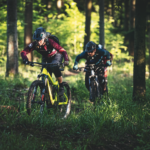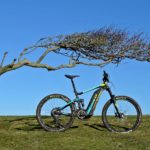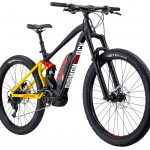I'm not sure, but I'd say that your power meter is displaying motor current. That's what most do. Voltage is constant, so that's also proportional to the power from the battery. Torque is more or less proportional to current, so that means that the display could be interpreted as motor current, torque or power from the battery.
The power from the battery isn't proportional to the motor's power because, motor power depends on two things: mainly it's speed, but also its efficiency, which varies with speed.
Adding that all together, you'll get maximum power from the motor at about 75% of it's maximum RPM. Maximum torque would be available, probably in the range 0 to 70% of maximum RPM if you can press the pedals hard enough. It's probable that the controller's algorithms aren't as simple as current being directly proportional to pedal torque. It's probably closer to that at low RPM with a bit of smoothing added, but as cadence increases, they bring in other factors, bearing in mind that after a certain RPM, maybe 70, the motor self-limits the current more and more as the speed increases. The control system cannot increase it above that no matter what you do.
Each time you change gear, the motor speed changes, and the gearing affects the torque at the back wheel. You have to take that into consideration too.







